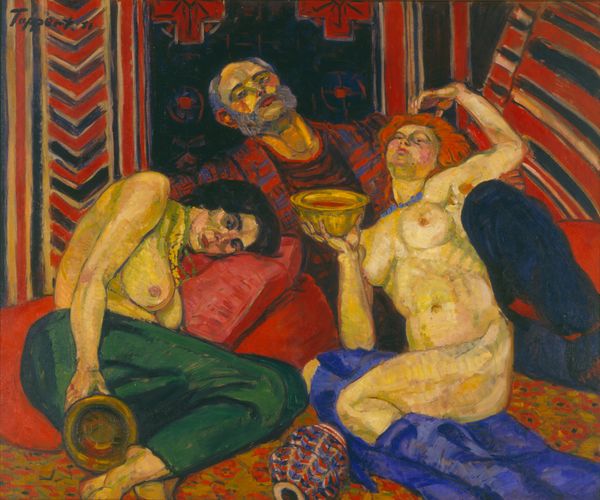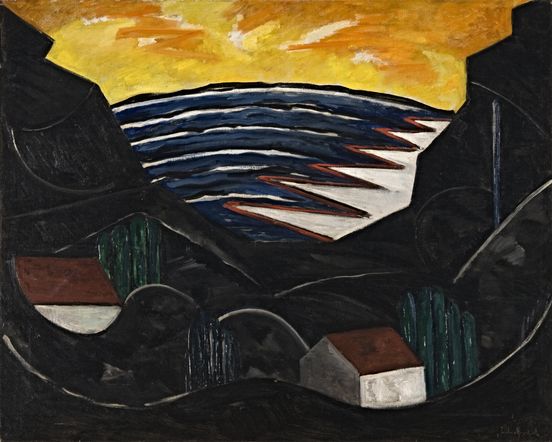Fragmenting forms and vivid, sometimes garish colours – these devices were used by Expressionist artists to visualise mental states, emotions and matters of the spirit. They had lost interest in the atmospheric renderings of nature and light dabbed onto the canvas by Impressionists.

Georg Tappert, Lot and his daughters, 1911
© VG Bild-Kunst, BonnTheir wild, impetuous works polarised the art scene in Berlin. This new approach to art prompted outrage not only among people of conservative taste, but even among Impressionist artists in the Secession.
In 1910, when their works were rejected for the annual exhibition, a group of younger artists split away. They included Max Pechstein, Georg Tappert, Moriz Melzer and Heinrich Richter-Berlin. Together with colleagues they founded the New Secession, which supported Expressionism from 1910 to 1914. Along with Herwarth Walden’s avant-garde gallery Der Sturm, this association was instrumental in enabling Expressionist styles to gain a foothold in Berlin and Germany.
In 1911 members of another grouping, Die Brücke, left Dresden for Berlin, Europe’s youngest metropolis, to join the New Secession and participate in its exhibitions.
Many Expressionist artists depicted the world as nervous and out of joint: Berlin, with its ceaseless bustle, was frequently a backdrop for their paintings. The catastrophe of the First World War changed things dramatically for most Expressionists. Their works were now dominated by personal experiences of war and destruction.
